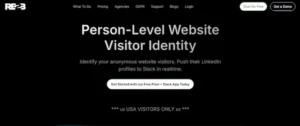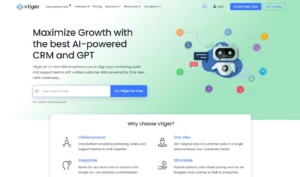Thanks to social media, we have more access to more information than ever before. We are bombarded with ads and sales so often that we block most of it out.
Being one of the salespeople that are noticed and are remembered is the challenge.
That’s when social prospecting comes in handy in the marketing process. Using social media to get clients is one step closer to turning leads into customers.
What is social prospecting?
The first step in the sales process, social prospecting, is using social media and other online networks to pinpoint potential customers, researching them so that you are fully prepared to build the kind of relationship that generates a sale.

Source: SocialWebThing.com
The goal of prospecting is to:
- develop a list of suspects (people or companies you believe might be interested in your product or service)
- contact each suspect and revamp the list for prospects
- close a deal, turning a prospect into a current customer
It’s easier said than done. But with the right strategy, you can do it too.
3 common mistakes people make when social prospecting
Whether you’re an expert or just starting to do social selling, keep in mind that there at least three mistakes that could be hindering you from turning leads into clients.
Mistake 1 — Your social selling looks like a spammer or a robot
Pay attention to how you look and how you sound, no matter what medium you are using to communicate to the prospect. If you look like either a spammer or a robot, your messages will be ignored or deleted. Try not to oversell, so you don’t come across as spam. Another mistake is not finding proper channels to communicate with your existing and potential customers because some of them prefer local phone service, while others would choose to connect via email.
Mistake 2 — Your social selling doesn’t compensate for lack of voice inflexion
It’s no secret that online messages and emails have their limitations. For instance, you should avoid using sarcasm in writing since the tone of voice is not apparent. Be careful how you write your messages to prospects, always double-checking to make sure the message is clear and polite and not too pushy.
Mistake 3 — You think the connection is stronger than it is
It’s easy to think that just from a few conversations, we know a person. But social selling should always be done by researching a prospect before cold calling.
Never over-generalize or assume when communicating with a prospect or customer. If you do make assumptions, follow up with “is that correct?”
5 successful ways to start social prospecting

These next 5 steps to keeping your sales pipeline full of leads may look tedious, but these are the very details that matter. These key prospecting steps will help you turn your prospects into leads.
1. Build a customer profile
The first step to prospecting is building an ideal customer profile. The profile helps you determine what kind of customer is interested in your product or service and, thus, determines your suspect list.
You can start your prospecting list by looking at current customer characteristics or by asking questions like:
- What is the company size, and where is it located?
- Who is in charge of the company?
- Will your product or service solve their problem?
Visit LinkedIn profiles and other social networking sites to gather as much information as you can.
2. Build your social media presence
Always be aware of branding. Your cold calling will be more effective if you have an established logo and a solid social media presence.
Although you can build on many social platforms as you like, it is best to focus on your target consumers’ most relevant social media platform.
For example, if you are a B2B agency, the social media you should use for prospecting is LinkedIn. But if you’re a fashion company, your best bet is Pinterest.
3. Ask for referrals, reviews, and surveys
Most people want to give their opinion. And the best opinion is that of happy customers.
At least 91% of B2B buyers are influenced by word-of-mouth, so the best thing you can do for your company is to ask for referrals after successful prospecting.
Asking for reviews and surveys is a great way to boost customer satisfaction and rapport.
4. Improve cold calling
When cold calling, it is essential to be confident (by knowing what you’re talking about), but overconfidence can come across as rude or controlling.
Make the prospect feel comfortable by making them feel in control. You can do so by:
- Asking the prospect questions (e.g. “is that alright with you?”)
- Using voice inflexion to sound friendly
- Being persistent but polite
5. Follow-up cold emails
Following up cold emails is part of prospect nurturing. Don’t underestimate the power of following up, but it must be done the right way. Overdoing the follow-up could come across as pushy or feel more like a robot than a real person.
Try sending casual emails or even thanking the prospect for their time the other day will show them that you are not just selling but looking to build a relationship.
Forwarding additional information and instructions about your product or service can be tricky, but (if it’s done right) it can help warm up the lead.
Remember that if the first email is unanswered, you still have a 21% chance of getting a reply to the second email.
Conclusion
It is the little things that matter in marketing.
The follow-up emails, the extra research before cold calling, and sounding friendly during a cold call are all tiny details in the big picture of prospecting.
Always consider what the client needs and how you are coming across to them, and you are well on your way to successful social prospecting.





